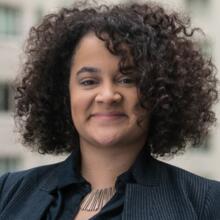At this point, many of us have seen the photographs circulating news networks and social media platforms: hungry children crying in the arms of parents; police blocking borders; crowds of refugees and migrants sleeping on European streets, waiting for any aid that might come their way. Most devastating have been the images of dead children washing onto the Libyan side of the Mediterranean Sea, like that of 3-year-old Aylan.
These scenes are extremely heartbreaking, with many publications refusing to publish them; others have published as a way to provoke the world’s consciousness. Here at America—we have not run the images until now—editor Kevin Clarke writes on the importance of viewing these tragedies, adding, “the nerve to look at these pictures will be enough to compel more of us to demand that our governments and the United Nations step up efforts to end the carnage.”
Others on social media have expressed the same. Below are just some of the many examples of how the religious community has responded.
War is the mother of all poverty, a vast predator of lives and souls.
— Pope Francis (@Pontifex) September 4, 2015This photo must be seen. We cannot turn away from these grievous affronts to human dignity. http://t.co/UpJO3dzC7fpic.twitter.com/Fujiw1P0HT
— James Martin, SJ (@JamesMartinSJ) September 3, 2015Over 220K killed in #SyriaCrisis and death toll keeps rising. Stories from Syrians http://t.co/lFUhn40mEQ
— Caritas Europa (@CaritasEuropa) September 4, 2015In July alone, Europe received over 107,000 new arrivals. More than 80% were fleeing war-torn #Syria. http://t.co/2eEdJKRbPG#refugees
— CRS News (@CRSnews) September 4, 2015The Syrian boy in the photo we're all seeing is the 'least brother' Jesus commanded us to care for: http://t.co/ODfZIr4uSm@baltimoresun
— Carolyn Woo (@WooCRS) September 3, 20158 out of 10 #refugees landing in the Greek islands are from #Syria. CRS partner @iamCARITAS is distributing aid: http://t.co/ndQSV2nfkd.
— Catholic Relief (@CatholicRelief) September 2, 2015"I'd like my family to join me here but we don’t have money to pay the smugglers"says A, 24 yr old from #Syriahttp://t.co/eqZsELOubP
— Caritas Europa (@CaritasEuropa) September 3, 2015#Europe: Yes, we can prevent #refugee deaths http://t.co/vk9LQYiP11pic.twitter.com/CnRTnUVsUF
— JRS/USA (@jrsusa) August 31, 2015Offering legal channels to the EU would be a #Humanitarian response http://t.co/sVYe9xeEuupic.twitter.com/Wxjlr5cWCY
— Caritas Europa (@CaritasEuropa) September 3, 2015I tried to bear witness to the dead babies washing up on Libyan beaches. Now I'm out of words. Everything is obscene. http://t.co/78CsavsWRb
— Tyler Wigg-Stevenson (@TylerWS) September 2, 2015






